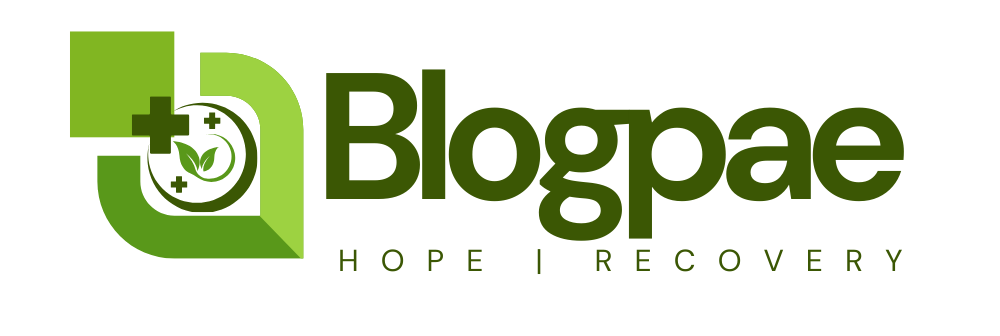Have you ever found yourself wondering if your actions are truly helping someone, or if they’re actually enabling their behavior? It’s a common dilemma many of us face, whether it’s with a family member, friend, or colleague.
Understanding the fine line between helping and enabling is crucial. Helping someone in need can be a kind and compassionate act, but enabling can create dependency and hinder personal growth.
In this article, we’ll explore the differences between helping and enabling, and provide guidance on how to navigate these complex situations. By the end of this article, you’ll have a better understanding of how to support others without creating unhealthy dependencies.
Key Takeaways
- Understand the difference between helping and enabling
- Learn how to identify enabling behaviors
- Discover strategies for supporting others without creating dependency
- Explore the importance of setting boundaries
- Find out how to encourage personal growth in others
Enabling vs Supporting: Understanding the Critical Difference
Understanding the fine line between enabling and supporting is crucial for fostering healthy relationships. While both concepts involve providing help or assistance, their underlying motivations and outcomes can be vastly different.
The key to distinguishing between enabling and supporting lies in understanding their definitions and implications. Enabling typically involves actions that inadvertently perpetuate harmful or unhealthy behaviors in others.
What Constitutes Enabling Behavior
Enabling behavior often manifests as actions that shield individuals from the consequences of their actions, potentially hindering their personal growth and accountability. Examples include consistently bailing someone out of financial trouble or making excuses for their tardiness.
Characteristics of Genuine Support
In contrast, genuine support empowers individuals to take responsibility for their actions and fosters personal growth. Characteristics of genuine support include encouraging independence, setting clear boundaries, and providing guidance without being overly controlling.
| Aspect | Enabling | Genuine Support |
|---|---|---|
| Motivation | Shielding from consequences | Empowering personal growth |
| Outcome | Potential for dependency | Fosters independence |
| Boundary Setting | Often lacks clear boundaries | Establishes and maintains healthy boundaries |
5 Warning Signs You Might Be Enabling Someone
It’s essential to identify the warning signs that indicate you’re enabling someone rather than supporting them. Enabling can often stem from a desire to help, but it can ultimately hinder the person’s growth and independence.
Here are some key indicators to watch out for:
Repeatedly Solving Problems They Should Handle
When you consistently solve problems or make decisions for someone else, you’re depriving them of the opportunity to learn and grow from their experiences. This can create a dependency that undermines their self-confidence and ability to tackle challenges independently. As Claire Mysko, author and expert on enabling behavior, notes, “Enabling can be a barrier to personal growth.”
Making Excuses for Harmful Behavior
Making excuses or justifying someone’s harmful behavior can be a sign of enabling. This can prevent the individual from facing the consequences of their actions, which is a crucial step towards change. As the saying goes, “The first step towards change is acknowledging the need for it.” By making excuses, you’re potentially hindering their ability to recognize and address their issues.
Feeling Resentful About Your Help
If you often feel resentful or drained after helping someone, it may be a sign that your assistance is not being used effectively. “Helping others should be a positive experience for both parties,” says Dr. Jane Smith, a psychologist specializing in relationships. When you feel resentful, it’s a red flag that you might be enabling rather than supporting the person.
By being aware of these warning signs, you can begin to assess whether your actions are supportive or enabling. Recognizing these signs is the first step towards making a positive change in your relationships.
Hallmarks of Healthy Support
Understanding the hallmarks of healthy support is crucial in fostering positive relationships. Healthy support empowers individuals to grow and become independent, sets clear boundaries, and provides guidance without being overbearing.
Empowering Independence and Growth
Empowering independence involves encouraging individuals to take charge of their lives. This can be achieved by supporting their decisions and helping them learn from their mistakes. By doing so, we foster a sense of self-reliance and confidence, enabling them to grow both personally and professionally.
Establishing and Maintaining Clear Boundaries
Clear boundaries are essential in healthy support. They help prevent burnout and ensure that support is given without compromising one’s own well-being. Setting limits and being clear about what one can and cannot do is vital. This clarity helps in maintaining a balanced and sustainable support system.
Providing Guidance Without Taking Control
Providing guidance without taking control involves offering advice and resources while allowing the individual to make their own decisions. It’s about striking a balance between helping and over-helping. This approach ensures that the individual remains in charge of their life and decisions.
| Hallmarks of Healthy Support | Description | Benefits |
|---|---|---|
| Empowering Independence | Encouraging self-reliance and decision-making | Fosters confidence and personal growth |
| Clear Boundaries | Setting limits to prevent burnout | Maintains a sustainable support system |
| Guidance Without Control | Offering advice without taking over | Encourages informed decision-making |
Common Scenarios: When to Support and When to Step Back
Understanding when to offer support and when to step back is crucial in maintaining healthy relationships. The line between supporting and enabling can be thin, and navigating it requires careful consideration of the situation and the individual’s needs.
Effective supporting techniques involve assessing the context and the person’s capacity for independence.
Appropriate Situations for Active Support
Active support is warranted in situations where an individual is facing a significant challenge or crisis, such as a serious illness, loss, or major life change. In these cases, providing emotional support, practical help, or connecting them with resources can be invaluable. It’s essential to assess the situation and offer support that empowers the individual without undermining their autonomy.
Red Flags That Your Help Is Becoming Harmful
Red flags include situations where your help is creating dependency, resentment, or is being exploited. If you find yourself consistently feeling drained, resentful, or noticing that the person is not making efforts to improve their situation, it may be a sign that your support has become harmful. Recognizing these signs early can help you adjust your approach to maintain a healthy dynamic.
Practical Strategies to Transform Enabling into Supporting
To shift from enabling to supporting, it’s crucial to adopt strategies that promote independence and personal growth. This involves a combination of self-reflection, boundary setting, and seeking external resources when necessary.
Initiating the Difficult Conversation
Starting a conversation about changing the dynamics of a relationship can be challenging. It’s essential to approach this conversation with empathy and clarity, expressing your concerns and reasons for wanting to change your supportive role. Using “I” statements can help avoid blame and foster a more open and receptive dialogue.
Developing and Enforcing Healthy Boundaries
Establishing clear boundaries is vital in transforming enabling into supporting behaviors. This means defining what you are and are not willing to do, and being consistent in enforcing these limits. Healthy boundaries encourage personal responsibility and help prevent resentment.
Connecting with Professional Resources When Needed
Sometimes, supporting someone effectively requires seeking help from professionals. This could mean therapy, counseling, or other forms of support. Recognizing when external help is needed is a sign of strength, not weakness. As the saying goes, “It takes a village to raise a child,” and sometimes, that village needs professional guidance.
“The best way to find yourself is to lose yourself in the service of others.”
| Strategy | Description | Benefit |
|---|---|---|
| Initiating Conversation | Openly discussing the need for change | Fosters understanding and cooperation |
| Setting Boundaries | Defining and enforcing personal limits | Encourages personal responsibility |
| Seeking Professional Help | Engaging with experts for guidance | Provides additional support and expertise |
Conclusion: Fostering Healthier Relationships Through Balanced Support
Fostering healthier relationships requires understanding the difference between enabling and supporting. Enabling can create dependency, while supporting empowers individuals to grow and become independent. By recognizing the signs of enabling behavior and adopting strategies to provide balanced support, you can help your loved ones develop resilience and self-sufficiency.
Applying the insights gained from this article, you can transform your relationships by setting clear boundaries, encouraging personal growth, and providing guidance without taking control. This balanced approach to support will lead to more positive and sustainable relationships.
By being mindful of the difference between enabling and supporting, you can make a positive impact on the lives of those around you, helping them navigate challenges and achieve their goals.

FAQ
What is the main difference between enabling and supporting?
Enabling involves helping someone in a way that creates dependency, while supporting empowers individuals to take care of themselves and make their own decisions.
How can I tell if I’m enabling or supporting someone?
Reflect on your actions and their impact. If you’re consistently solving problems or making excuses for someone, you might be enabling. Supporting involves setting boundaries and encouraging independence.
What are some strategies for transforming enabling into supporting?
Initiating difficult conversations, developing healthy boundaries, and connecting with professional resources when needed are effective strategies for making this transformation.
When should I provide active support, and when should I step back?
Provide active support in situations where someone genuinely needs help, but step back when your help is becoming harmful or creating dependency. Be aware of red flags, such as resentment or an lack of effort from the person you’re helping.
How can I empower someone to be more independent?
Empowering independence involves encouraging decision-making, providing guidance without taking control, and establishing clear boundaries. This helps individuals develop the skills and confidence they need to care for themselves.
What are some common scenarios where enabling can become a problem?
Enabling can become a problem in situations where someone is struggling with addiction, mental health issues, or other challenges that require professional help. In these cases, enabling can hinder their recovery and create long-term harm.
How can I develop healthy boundaries when supporting someone?
Developing healthy boundaries involves being clear about what you’re willing and able to do, communicating your limits, and being consistent in enforcing them. This helps prevent burnout and ensures that your support is sustainable.
Reference




